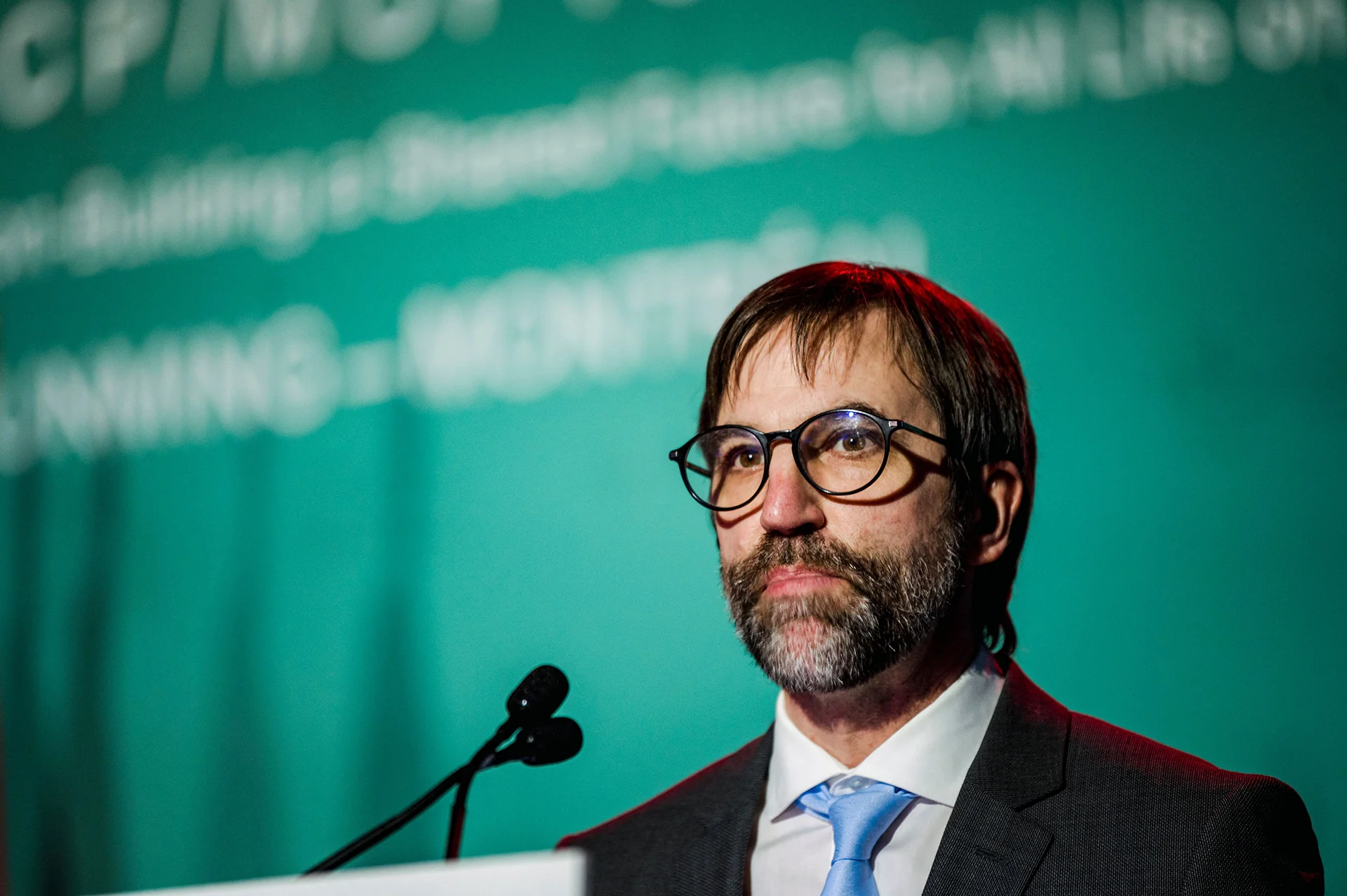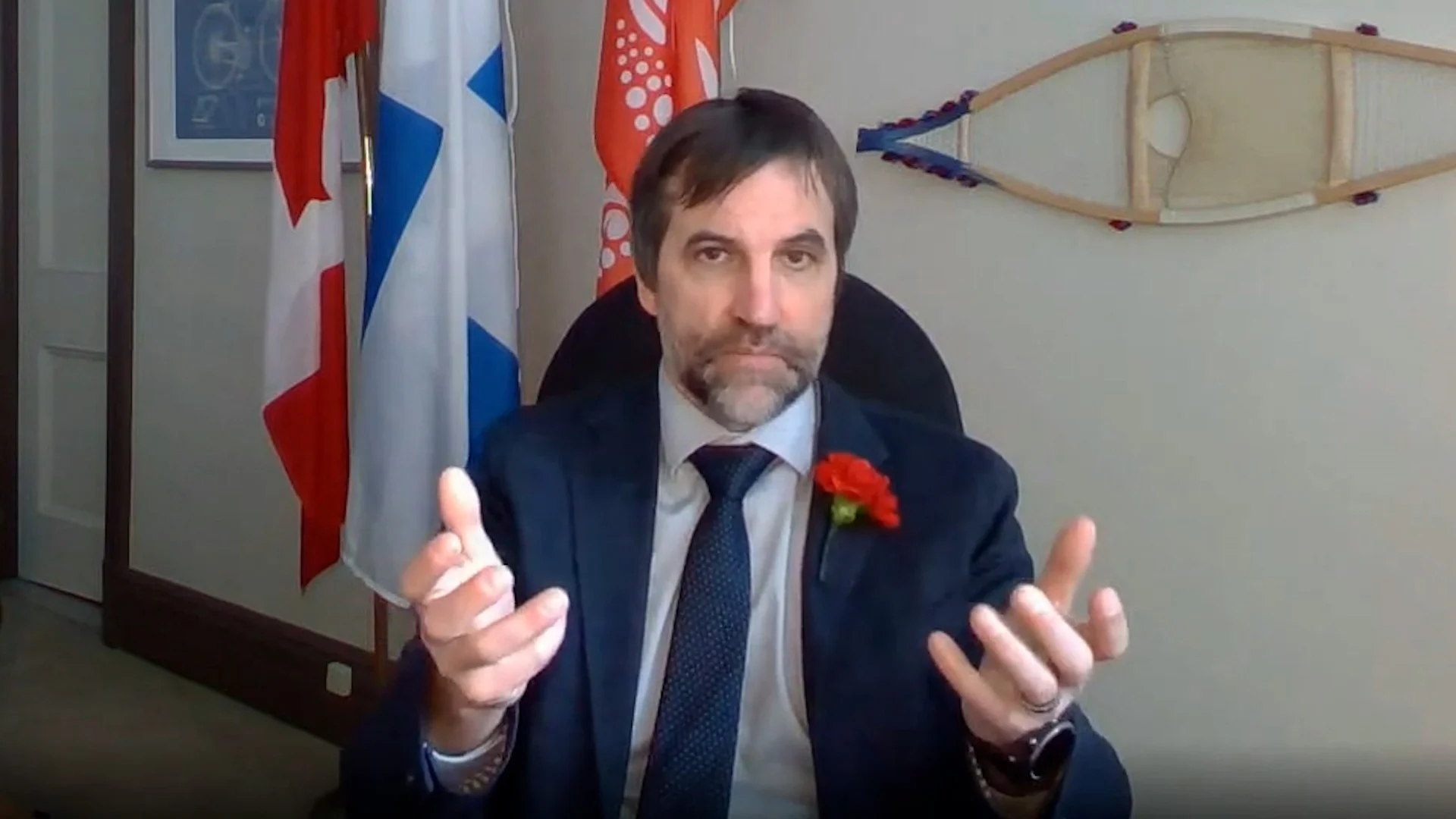
Exclusive: Environment minister on the future of criticized emissions report
Steven Guilbeault explains why the emissions inventory report uses international standards for its findings. Environmental groups say there’s still a lot of work to be done.
The yearly report tracking Canada’s greenhouse gas emissions caught flack in mid-April.
Environmental groups criticized its findings, saying that it understated the extent of the lumber industry, among other issues. Recently, Minister of Environment and Climate Change of Canada (ECCC) Steven Guilbeault spoke with The Weather Network about the report, its rationale, and its future in an exclusive interview.
This year’s report found that, in 2021, GHG emissions in Canada reached 670 megatonnes of carbon dioxide or equivalent (Mt CO2e). However, the document’s finding that the logging industry was responsible for net-negative emissions was a sticking point for Nature Canada, who argued that the feds offset this number with the carbon sequestered by trees growing.
READ MORE: Canada's emissions report paints a positive picture, but not a complete one
A report from April 20 by the Commissioner of the Environment and Sustainable Development to the Parliament of Canada also noted the government report remarks on the lack of transparency in forestry sector emissions, among other things.
Minister Guilbeault countered saying the way Canada reports its emissions are in line with the standards set out by the Intergovernmental Panel on Climate Change (IPCC). He added it’s important for countries that report their emissions to the IPCC to use similar metrics. That way “at least everyone around the globe is comparing and measuring the same things,” he told The Weather Network.
“It would be impossible to try and compare and understand what is happening with the world scores if people weren’t using … at least similar methodologies,” he said, adding that the ECCC looks for ways to improve the report.
Logging concerns
According to Michael Polanyi, policy and campaign manager of nature-based climate solutions with Nature Canada — one of the groups that criticized the inventory report after its release on April 14 — IPCC standards require balanced reporting. In an email to The Weather Network, Polanyi wrote that this year’s report didn’t have that balance.
For instance, Canada does not count “natural disturbances” — which reached 287 Mt in 2021 — such as wildfires in its national emission totals. But, in 2021, it “claimed credit” for 79 Mt of carbon reductions from the regrowth of trees after these natural disturbances, the report found, Polanyi wrote.
Additionally, one paper from March noted that Canada is one of only two countries that does not include “natural disturbances, such as fires, insects, and wind throws,” in its national emissions reporting for the IPCC, the other being Australia.
He wrote that there’s “nothing stopping Canada from separately and transparently reporting logging emissions.”
In a new report, Nature Canada and Natural Resources Defense Council (NRDC) found that the industry accounted for 73 megatonnes of net carbon emissions in 2021, rather than the net-negative total in the national inventory.
According to Polanyi, Canada’s GHG inventory report has a “heavy” reliance on modelling. He wrote that this was a problem considering there are “large uncertainties and knowledge gaps,” in modelling. Rather, according to Nature Canada, the government should pursue on-site measurements.
He wrote that the lack of transparency in the report is “giving one sector a free ride on its climate pollution.”
Other gaps
James Snider, vice president of science, knowledge and innovation at WWF Canada said the inventory report should also improve its reporting on emissions from ecosystem degradation. For example, peatlands in Canada are believed to store up to 150 billion tonnes of carbon. However, when they are disturbed by human activities like mining or road construction, they release greenhouse gases like carbon dioxide and methane.
He said the report appears to be in line with IPCC guidelines, but the federal government needs to do a better job of communicating its findings with Canadians. A representative from the ECCC told The Weather Network this is something the government is looking into going forward.
Past research has also noted that emissions from other sectors may be underreported in Canada as well. For example, a recent study, which also lists some ECCC researchers as authors, found that emissions from Alberta’s oilsands could be 65 per cent higher than previously thought. The research makes use of airplane fly-over and satellite data for its findings.
There have been other instances in which critics have expressed concern that industry actors may be self-reporting their emissions lower than they actually are, such as in the case of the logging industry in Quebec.
The ECCC representative said that the GHG inventory report does make use of self-reporting in some cases. For instance, facilities that emit 10,000 Mt or more need to report on their emissions to the federal government. This is included in the GHG inventory report. Emission amounts from smaller operations and sources are often generated using modelling.

Environment and Climate Change Canada Minister Steven Guilbeault speaking with The Weather Network in an exclusive interview about the national greenhouse gas inventory report. (The Weather Network)
The report also uses other methods, such as satellite data to observe changes in land use. Minister Guilbeault again noted that Canada’s reporting is in line with IPCC guidelines, and added that the country regularly works to improve its methods.
Looking ahead
Over the years, the federal government has made refinements to the inventory report. For instance, there were changes between last year and this year’s reports, Guilbeault said. For instance, Canada has been working on better reporting on methane, fugitive emissions (such as accidental leaks) and the social cost of greenhouse gases. This year’s GHG inventory includes updated historic data on forest land use in provinces, including Alberta and British Columbia.
The 268-page inventory report also includes a section about proposed changes, including “but are not limited to, the development of new or updated activity data, improved algorithms, independent validation or calibration leading to the refinement of parameters.”
Minister Guilbeault said ECCC has been “having ongoing meetings” with researchers, environmental groups and even companies about ways to improve its methodologies to track and report on forestry and oil and gas emissions. One such company is Montreal-based GHGSat, which collects emissions data using satellites mounted with high-resolution sensors, enabling them to link emissions directly with their source, according to the company’s website.
New technologies and methods to measure emissions are developed frequently, Minister Guilbeault said. These could change how Canada operates, or, potentially, the federal government could “work with the international community” so the methods can be the “new international norm,” he added.
The IPCC “won’t change the international reporting system based on one study. But if more studies come out, pointing in that direction, there could be a rationale there,” he said.
Guilbeault said changes may not come next year, but he thinks the government’s “goal is to ensure that we have the best possible methodologies.”
Thumbnail image: Steven Guilbeault, Canada's minister of Environment and Climate Change, speaks at the opening of a cocktail hosted by Canada to welcome delegates to the United the Nations Biodiversity Conference (COP15) at the Palais des congrès de Montréal in Montreal on Dec. 10, 2022. (Andrej Ivanov/AFP via Getty Images)












